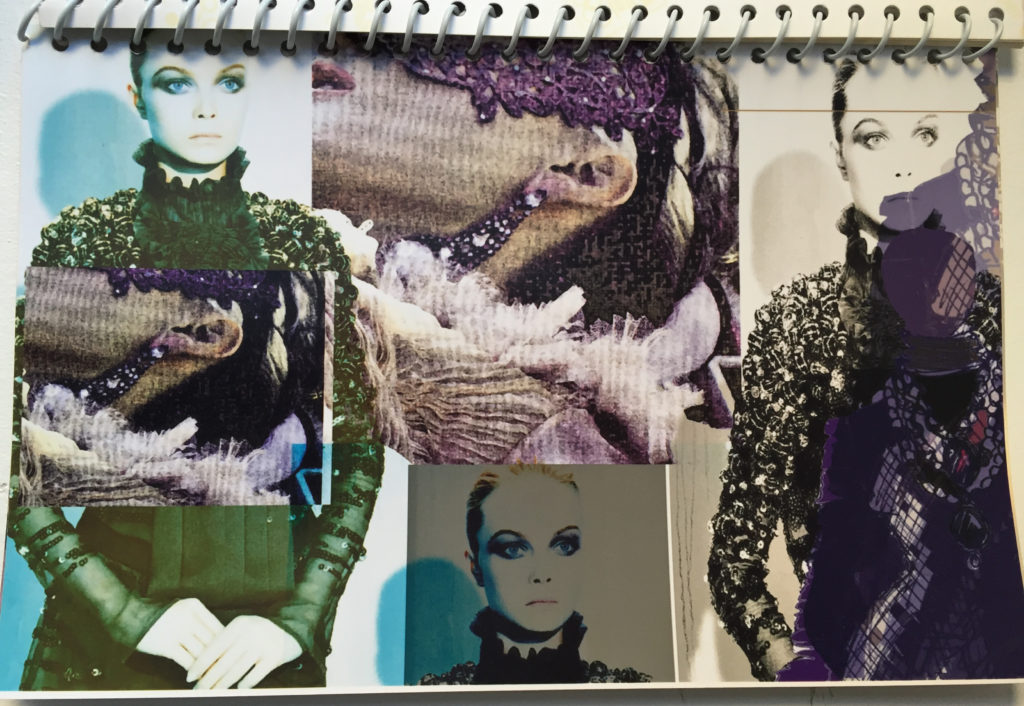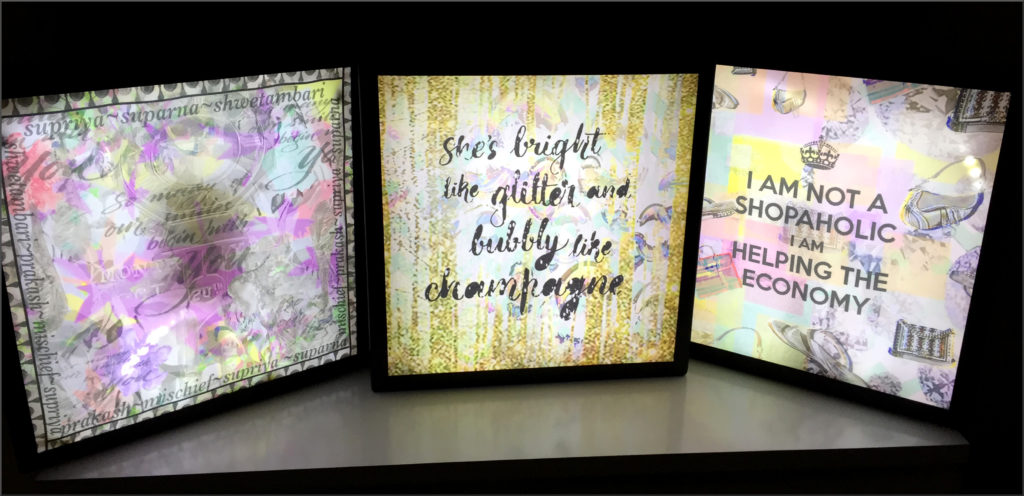I have been looking to start writing little sociological features on things and people outside of the immediate realm of the social sciences — to see how our worlds correspond. Fashion has been on my mind lately. And, as luck would have it, I just recently came upon a young international textile designer, who also turned out to be a lovely person, who fits the bill perfectly.
I first saw Shwetambari Mody in an online interview with ITV. She was talking about her work and, just for a moment, flashed images of these gorgeous neck-scarves she created. Those scarves made an impression on me with their colorful pastels and breezy stylishness.
Having just recently moved back to NYC, I was reconnecting with old friends and professional contacts, some in the fashion industry — and lo and behold, was introduced to Shwetambari Mody! She agreed to answer a few questions and even let me see some of her work.
As it turned out, those scarves I liked so much were special. Shwetambari and her sisters conceptualized three scarves as a gift to their mother for her 60th birthday. They came up with three phrases that would capture the different sides of their mother’s personality and Shwetambari then sketched and Photoshopped out the rest and brought them to life in light boxes.
Now that I got a closer look at these scarves, I can explain their appeal to me better. First of all, they were made with love and you can feel it, somehow. I see a classic look with deeply personal details. As a human, I am drawn to the emotion behind them. As a semiotician, I think of it as intimate content, wrapped in luxury form, which is an attractive and, dare I say, seductive combination.
As a person who has watched multiple seasons of Project Runway, another comment that comes to mind is “it looks expensive”, which is another way of saying “high-fashion”, I think. Accessories tend to serve more than one purpose: they are a form of artistic expression and are supposed to compliment your look, but also, they are a calling card of sorts, announcing your socio-economic standing to the world. Some people consider it frivolous to think or talk about such things, but we take for granted how much social identity management most of us do on a regular basis.
There are very few among us who do not, to some degree, consciously or not, care about the status and class they are projecting, in addition to just looking nice. Getting teeth straightened or whitened is not typically a medical necessity. We invest into “looking healthy” because good health, hygiene, neatness and time to work on one’s appearance are a sign of economic prosperity and, implicitly, social trustworthiness. Getting nails polished? It’s a message you are sending that you don’t do manual labor.
Now that I have met Shwetambari, I am additionally impressed with her level headedness and ability to combine the artistic with the pragmatic, which is a struggle for many creative types. I asked her why and how she went for both, the design degree and an MBA in branding. She said it was because she is an artistic personality from an entrepreneurial family and was always encouraged to pursue her own ideas and interests, as long as she worked very hard at it and kept in mind the business side of things.
Shwetambari sees too many designers in the industry, who think only in terms of artistic pursuits, but have no understanding of the structural, economic and logistical workings of the industry. As a result, they run into snags when their plans crash and burn against the financial realities of the fashion business.
This problem is actually endemic to many professions that forcefully combine the creative and the pragmatic. This is certainly true of academia: some professors exist in their own intellectual and ideological bubbles, unaware of how their salaries get paid, how academic enrollment works or what the student lives are like. Academic administrators can be equally out of touch with the faculty’s intellectual orientation and the students’ best educational interests.
Creative freelancers can be lightening-fast at their craft but incredibly slow — and I would go as far as to say psychologically paralyzed — to promote themselves and to set reasonable, sustainable, consistent prices for their services. It is quite understandable: not all are raised and socialized to think in business terms, not everybody has the acumen for it and not everyone cares. But for most creative types, some business courses, books, internships, apprenticeships — any way to get an idea of how things run and what things cost, will spare one of having to reinvent the wheel on a daily basis, if / when one chooses to become self-employed.
I would like to thank Shwetambari Mody for showing me her beautiful work, sharing a bit of her story, explaining to me new things about the fashion industry and indulging my sociological rants. Maybe she will let me follow up, when she releases her collection of Indian Luxury accessories in the future.


